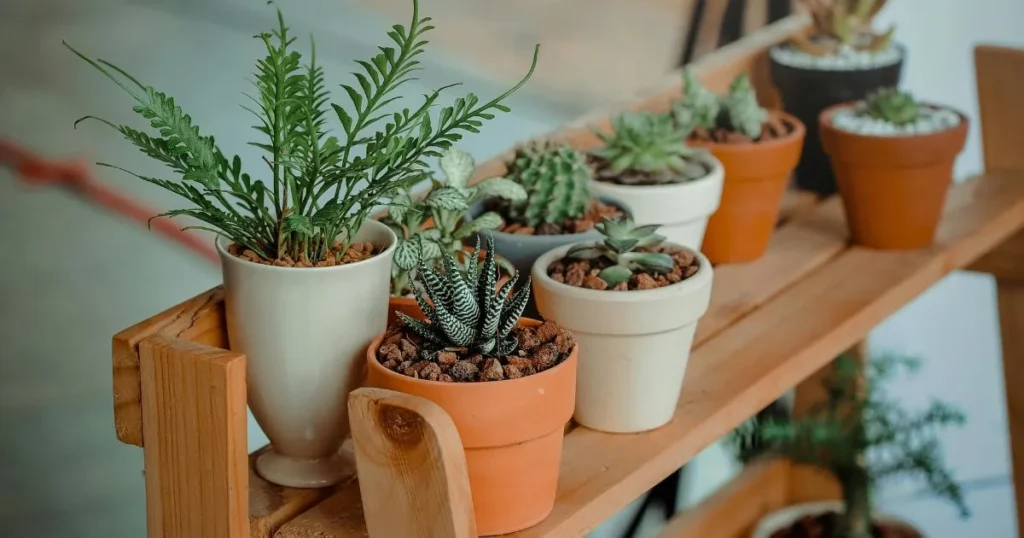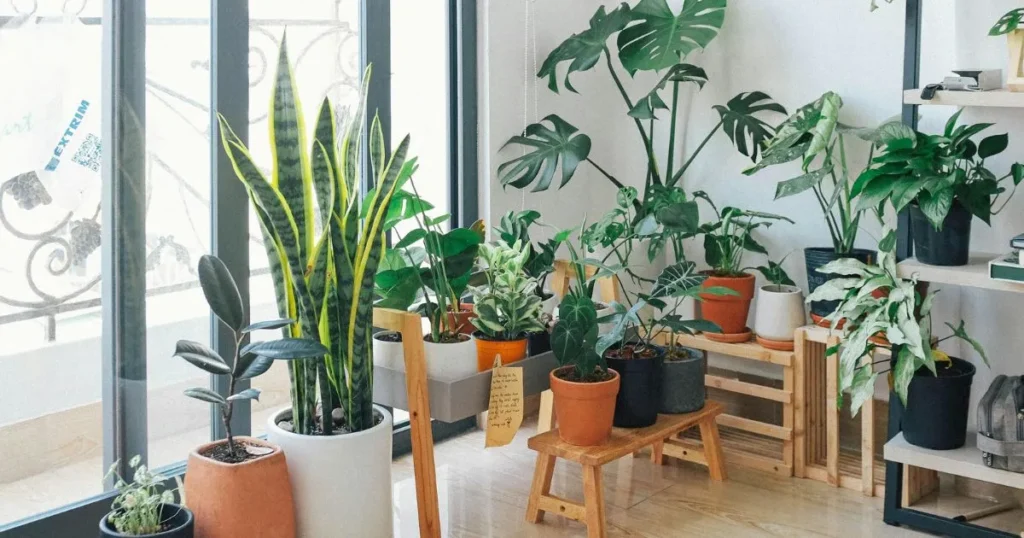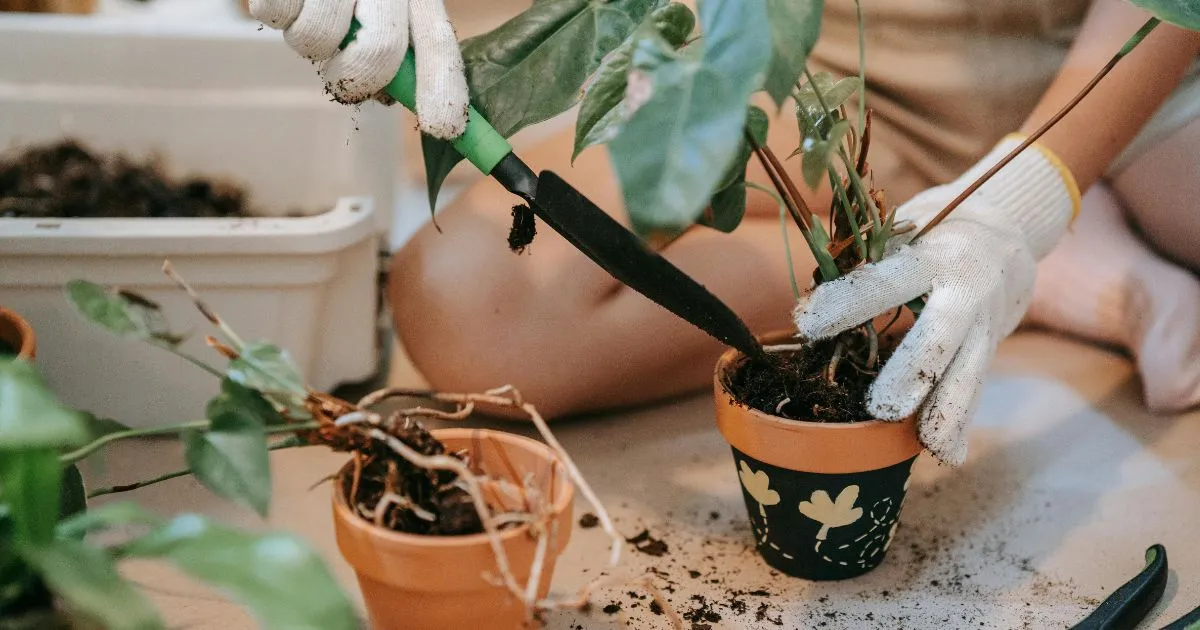Table of Contents
Indoor garden plants or Indoor gardening in general has become an increasingly popular hobby as people seek to bring a touch of greenery into their homes and workspaces. Beyond their aesthetic appeal, indoor plants offer numerous benefits, including improving air quality, reducing stress, and boosting productivity. Whether you are a seasoned gardener or a novice looking to get started, this guide will help you understand the essentials of indoor garden plants and how to care for them effectively.
Benefits of Indoor Plants
1. Air Purification
Many indoor plants are known for their ability to purify the air by absorbing toxins and releasing oxygen. Popular choices like spider plants, peace lilies, and snake plants are particularly effective at removing pollutants such as formaldehyde and benzene.
2. Stress Reduction
Studies have shown that being around plants can reduce stress and anxiety levels. The calming presence of greenery can create a serene atmosphere, making it easier to relax and focus.
3. Improved Humidity
Indoor plants release moisture into the air, which can help combat dry indoor environments, especially during winter. This increased humidity can benefit your skin and respiratory health.
4. Enhanced Productivity
Having plants in your workspace can boost concentration and creativity. They create a more pleasant and inspiring environment, leading to improved performance.
Popular Indoor Garden Plants
1. Snake Plant (Sansevieria)
- Care Requirements: Low maintenance, tolerates low light, and needs infrequent watering.
- Benefits: Excellent air purifier, hardy, and visually striking with its upright leaves.
2. Spider Plant (Chlorophytum comosum)
- Care Requirements: Thrives in bright, indirect light and requires watering when the soil feels dry.
- Benefits: Non-toxic to pets, removes air toxins, and propagates easily through offshoots.
3. Peace Lily (Spathiphyllum)
- Care Requirements: Prefers medium to low light and regular watering to keep the soil moist.
- Benefits: Known for its white blooms and ability to improve indoor air quality.
4. Pothos (Epipremnum aureum)
- Care Requirements: Grows well in low light and tolerates irregular watering.
- Benefits: Fast-growing, versatile, and perfect for hanging baskets or climbing displays.
5. Fiddle Leaf Fig (Ficus lyrata)
- Care Requirements: Needs bright, indirect light and moderate watering.
- Benefits: Adds a bold statement to any room with its large, dramatic leaves.
6. Aloe Vera
- Care Requirements: Prefers bright light and infrequent watering.
- Benefits: Has medicinal properties and can be used to treat minor burns and skin irritations.
Tips for Caring for Indoor Plants
1. Choose the Right Plants
Consider the lighting conditions, temperature, and humidity of your space before selecting plants. For instance, succulents and cacti thrive in bright light, while ferns prefer shaded, humid environments.
2. Use Proper Containers
Ensure your plant pots have drainage holes to prevent waterlogging. Using a well-draining potting mix is also essential to keep roots healthy.
3. Water Wisely
Overwatering is one of the most common causes of plant death. Check the soil’s moisture level before watering, and avoid letting plants sit in standing water.
4. Provide Adequate Light
Understand the light requirements of your plants and position them accordingly. South-facing windows offer bright light, while north-facing ones provide low light.
5. Maintain Optimal Humidity
For plants that require high humidity, consider using a humidifier or placing a tray of water near the plants. Grouping plants together can also help maintain humidity levels.
6. Prune and Repot
Regular pruning helps remove dead or yellowing leaves, encouraging new growth. Repotting every couple of years ensures that plants have enough space to grow and receive fresh nutrients.

Common Challenges and Solutions
1. Yellowing Leaves
- Cause: Overwatering, underwatering, or poor light conditions.
- Solution: Adjust the watering schedule and check light exposure.
2. Pest Infestations
- Cause: Common indoor pests like spider mites or aphids.
- Solution: Use neem oil or insecticidal soap to treat affected plants.
3. Leggy Growth
- Cause: Insufficient light.
- Solution: Move the plant to a brighter location or supplement with grow lights.
4. Root Rot
- Cause: Overwatering or poorly draining soil.
- Solution: Trim affected roots and repot in fresh, well-draining soil.
Designing Your Indoor Garden
An indoor garden can be as simple or elaborate as you desire. Here are some ideas to inspire you:
- Vertical Gardens: Use wall-mounted planters or hanging pots to save space and create a green focal point.
- Terrariums: Create miniature ecosystems with succulents, moss, and decorative stones.
- Herb Gardens: Grow herbs like basil, mint, and parsley on your kitchen windowsill for a fresh and functional touch.
- Plant Shelves: Arrange plants of varying sizes on shelves for an organized yet lush display.
Conclusion
Indoor gardening is a fulfilling way to enhance your living space and well-being. By understanding the needs of your plants and providing the right care, you can create a thriving indoor garden that brings joy and vitality to your home. Whether you start with a single pothos or cultivate an entire wall of greenery, the benefits and satisfaction of indoor gardening are undeniable.

FAQ
1. What are the easiest indoor plants for beginners?
Snake plants, pothos, and spider plants are excellent choices for beginners due to their low-maintenance nature and adaptability.
2. How often should I water my indoor plants?
The watering frequency depends on the plant type and environmental conditions. Generally, water when the top inch of soil feels dry.
3. Can I grow indoor plants in low light?
Yes, many plants, such as peace lilies, snake plants, and pothos, can thrive in low-light conditions.
4. How do I know if my plant needs repotting?
If roots are growing out of the drainage holes, or if the plant shows stunted growth, it’s time to repot.
5. Are indoor plants safe for pets?
Some plants, like spider plants, are non-toxic to pets, but others, such as peace lilies and pothos, can be harmful. Always research plant toxicity if you have pets.
6. How do I increase humidity for my indoor plants?
Use a humidifier, place a water tray near plants, or group plants together to boost humidity.
7. What should I do if my plant gets pests?
Treat pests with neem oil, insecticidal soap, or by wiping leaves with a damp cloth.

